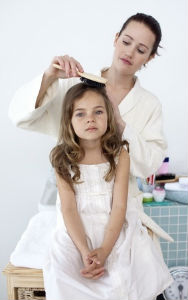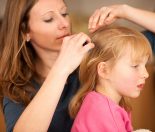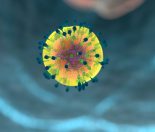“They are not airplanes!!,” my six year old yelled. Followed by, “They are not pteradactyls.” And a fit of giggles. He knows he’s funny.
Isaac is happily wiggling while I check his hair for headlice. He is creating all the flying images he can about what headlice cannot do. He does NOT sit still, ever, so wiggling is the best I can hope for.
If you’ve never dealt with headlice, you’ll already know that the experience can be emotionally loaded and difficult for both you and your child. You probably dread having to deal with them. Just thinking about headlice makes you want to scratch your head, doesn’t it?
Your response to your child who has headlice is as important as the way you tuck your child into bed, or read books or give cuddles. This is the gritty front face of parenting, and you can make it a good experience for both you and your child.
First of all, having headlice is no reflection on your mothering. In New Zealand headlice is a part of most every school, with some schools at epidemic proportions. If you haven’t run into it yet, odds are that you will.
The first step to dealing with headlice is to create a caring environment. Your child is looking to you for explanation, reassurance and help. By taking this time, you are your child are working together to a solution. You normalise and guide the experience.
Mothers will confess that while they choose foods and products carefully for their children, when it comes to headlice, they feel desperate and will do “whatever it takes”, meaning use a chemical product they are actually quite uncomfortable using.
The truth is chemicals are not necessary. Oil based products (which is why people sometimes use mayonnaise or conditioner) kill the headlice by physically blocking their breathing holes. This means you can use a very gentle product on your child without compromising effectiveness. Your product choice alone will be a big factor in the amount of upset around getting rid of headlice. If it smells nice and doesn’t hurt your child’s eyes, it is going to be a whole lot easier to work together.
If you have no oil-based product easily available and it’s bedtime, just do your first treatment with olive oil. If you have some tea tree or lavender essential oil, you can add a couple of drops to 2 Tablespoons of oil.
The key to getting rid of headlice is to understand about the life cycle that is unfolding before you. You may be able to easily find the headlice that are full sized adults, but not be able see the just born headlice (they are VERY small), or even remove all of the nits (eggs). By checking your child’s head every 4 to 7 days, you’ll make sure to catch the adult headlice BEFORE they begin laying another round of eggs. That’s how you break the cycle.
Headlice is a very common, under-talked about, and possibly under-treated complaint. Dramas happen. Conversation (and therefore support) may feel hard to come by. Talk to a friend, and talk through options with your daycare or school. You’ll be surprised at how many stories, ideas and shared laughs you’ll discover.
You can read more about getting rid of headlice here.






